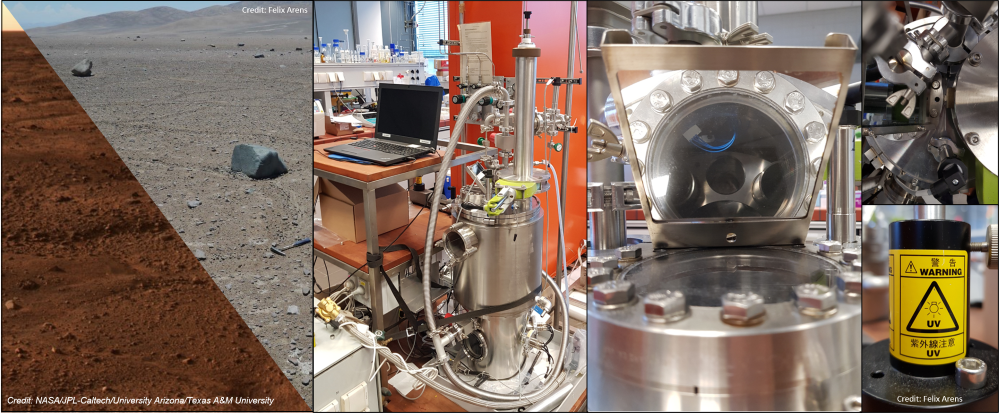
In the search of biosignatures on Mars we have to understand how organic molecules react, alter and degrade under Martian conditions. Our focus lies on the UV-radiation and the chlorination by oxychlorines like Ca(ClO4)2, which have been found by the Phoenix Lander on the Martian surface. Understanding these interactions will be the first step to help us answering questions about their presence and about extant life on Mars, as well as providing a framework for interpreting the results of future Mars missions that will search for biosignatures and life such as with ESA ́s ExoMars rover, which will be launched in 2022. This study is also highly significant in context of the recent discovery of several chlorinated organic compounds by the Curiosity rover SAM instrument package.
To gain insights into these alteration and degradation processes we use our Mars Simulation Chamber (MESCH) to conduct laboratory experiments under Mars simulated conditions to investigate the effects on biosignature molecules of highly reactive intermediary products generated during the UV-driven production of oxychlorine (ClOx) species.
The next step is to investigate more closely Mars analog sites on Earth, like the Atacama Desert. Environmental samples and in- situ measurements will help to understand the relationship between biosignature preservation, alteration, or destruction, and ClOx levels at and below the surface of this hyperarid environment. The comparison of the results from the lab experiment and the environmental data will help to verify whether the detected compounds by the Curiosity Rover might be of biological origin.
Contact: Felix Arens, f.arens@tu-berlin.de
This project is funded by the Deutsche Forschungsgesellschaft (DFG) (SCHU 3114 10-1).
Duration: 01/2021 - Present